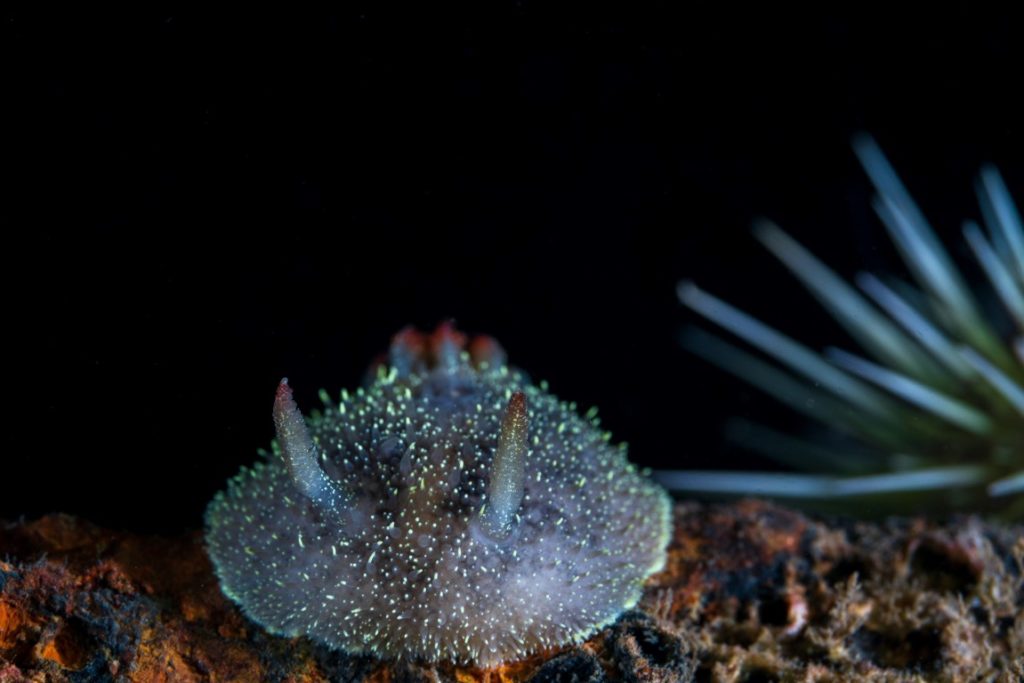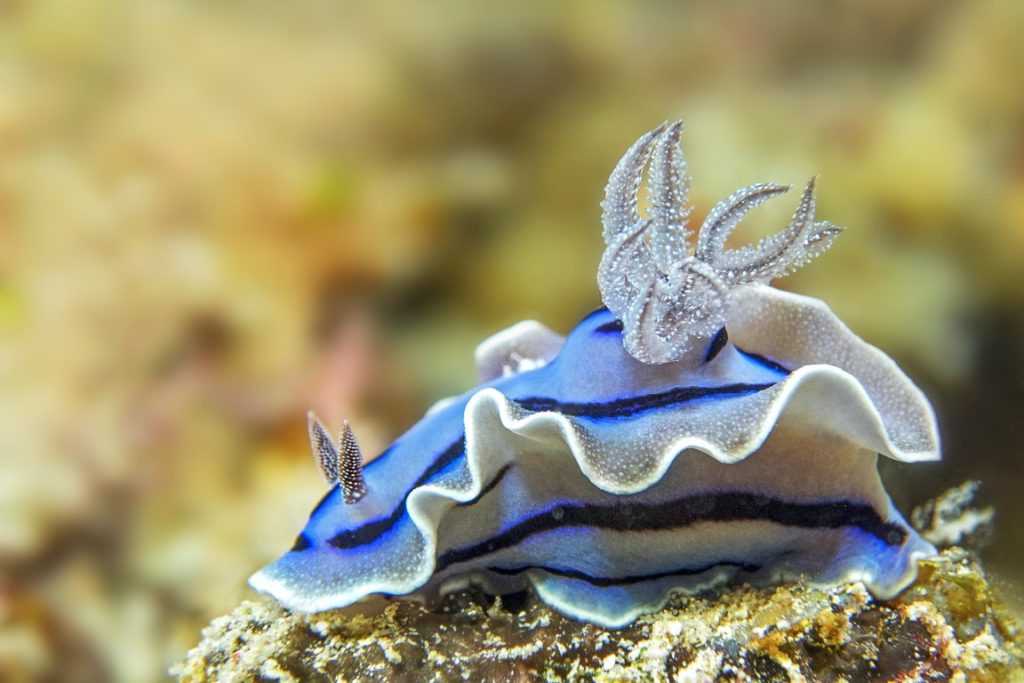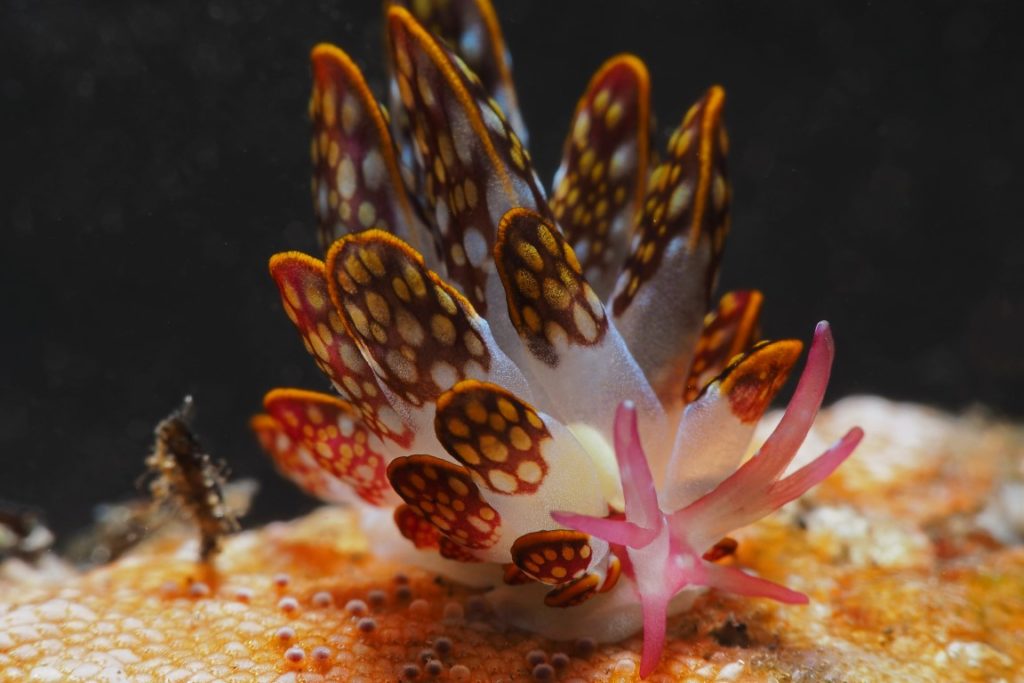Nudibranchs are the world’s smallest animal in the ocean. They live on seagrass, seaweed, and other algae and can be found everywhere from the Red Sea to the Gulf of Mexico. Learn about this small creature with a big personality!
Nudibranchs are tiny invertebrates that live among seagrass, seaweed, and other algae in oceans worldwide. Their size has earned them their English name, which means “naked gill.” These sea slugs may not look like much at first glance, but they’re actually quite fascinating. Let’s explore everything you need to know about nudibranchs-their social structure, hunting habits, long-distance migration patterns, and more!
Table of Contents
What are Nudibranchs?

Nudibranchs are a type of sea slug that, despite their name, have external gills. They can be found in almost every ocean around the world and prefer to live on seagrass, algae, rocks, and snail shells. Their bodies are bilaterally symmetrical and covered with a colorful radula (tooth) made out of chitin that can differentiate taste buds by texture alone. Nudibranchs range in size from .5 cm – 18 cm depending on age (the largest recorded specimen was 33 cm long!)
How Big Do They Grow?

Due to their small size, nudibranchs tend to fly under the radar if you’re not looking closely enough. In fact, it was only in 2008 that researchers at the National University of Ireland discovered a nudibranch species called Hypselodoris infucata , which is smaller than one inch long. The smallest known fully grown sea slug measures just 1.7 mm—that’s about half the size of a grain of rice!
How Do They Eat?

Nudibranchs can be carnivores, herbivores, or even parasites depending on their species. Most feed on hydroids or sponges using their radulae as rasping teeth to break open prey. Some are nocturnal predators that feed at night and hide during the day to keep from being eaten. Others slowly crawl along the ocean floor in search of food. The Nudi above are known as sea bunny.
The unique texture of the nudibranch’s radula allows it to taste different sea creatures using only its tongue. It can even use this tool to determine if an object is edible or not. If a meal isn’t up to their standards, they simply spit it out!
Where Do They Live?
Nudibranchs can be found near coral reefs or floating seagrass in just about every ocean around the world, though some are known to migrate from as far away as Japan and Australia during the winter months. Due to their sedentary lifestyle, these animals don’t need much space-they typically live anywhere from 3 feet under water all the way up to 3 feet above!
How Long Do They Live?
Many of us have grown up hearing the common adage, “Don’t judge a book by its cover,” but in the case of some species, it’s not necessarily true. Nudibranchs are hermaphrodites (meaning they have both male and female sexual organs). Most species reproduce during mating season; however, some can even self-fertilize. The entire process only takes about five days from start to finish. Lasting anywhere from four months to three years, their lifespan varies considerably depending on age.
What makes them so special?

Their size.
About the size of a grain of rice, these tiny sea slugs are the world’s smallest living animals in the ocean! (Sea cucumbers and starfish can be kept as pets but they aren’t usually considered marine life.)
They have no eyes.
Nudibranchs don’t need vision to survive because they live on or near hard surfaces where they feed on microalgae growing on the rocks and corals. They do have an eye-like spot though, called “ocelli,” which probably helps them swim toward light.
Colors.
Nudibranchs come in an array of colors and patterns to blend into their surroundings for protection against predators.
Many have frilly edges called “lappets” that they can extend or hide using muscles near the tips of the lappets, which makes them look like plants or flowers. (Learn more about sea slugs – not all are nudibranchs.)
This one looks like a purple Christmas ornament! As it moves along the reef, it covers its body with debris to make it harder for fish to see it. It is also poisonous if eaten by other animals!
Shapes.
If you’ve ever held a seashell, then you know there are many different shapes of shells. Many sea slugs have a shell-like body, though some don’t even look like they have one! They may also change shape to help them blend in with their surroundings.
Colors
The bright colors are a warning to predators that they taste bad. Nudibranchs get their color from chemicals inside their bodies, just like we get our red blood from iron stored inside of us.
Nudibranch’s eyespots make it look bigger than it really is ! This helps the nudi avoid being eaten by predators, who often mistake them for being larger than they actually are.
How do they move?
When nudibranchs put out their lappets and crawl on the ocean floor, it looks like they’re walking! There are two main ways that nudibranchs get around underwater: swimming and crawling.
One way is by using muscles in its foot to swim through the water column or across a reef looking for food. It can swim backwards as well as forwards using its foot as an anchor while undulating its body to push it forward. It can change direction by flapping its foot.
The other way is by crawling on the reef bottom or underwater rocks with the help of their tiny tube feet that suck on surfaces. Nudibranchs can even crawl upside down!
Phylogeny and Taxonomy
It’s time to get technical. Cladistically speaking, nudibranchs are classified in the clade Gastropoda (just another name for “snails”). They belong to the taxonomic class Opisthobranchia within Gastropoda, which includes sea slugs along with many other types of marine gastropods. The Nudibranchia itself has an order called Doridacea, which includes all known nudibranchs today! In turn, the Doridacea belong to a large taxon called dories . Then looking at them on even larger scales, nudibranchs are in the phylum Mollusca (including our beloved snails) and the subphylum Sipuncula before ending at the grand kingdom Animalia.
For a visual comparison, here is an image comparing a few other small animals to adult Dendrodoris nigra. Each of these creatures falls short of 1 inch (2.54 cm) with many of them barely making 0.1 inches (2 mm)! The largest algal cell on an open oceanic reef can reach 4 inches (10 cm), though most algae cells around coral reefs tend to be only 2 – 3 mm tall! Click to enlarge!
The next time you’re diving somewhere warm, take a little extra time to look around the reef. You would be surprised at how many tiny creatures inhabit our beautiful reefs and oceans. In fact, they may even be more interesting than you thought!
Nudibranchs are an extremely diverse group of gastropods with over 2,000 species identified today. Their samples have been found as far-reaching as polar regions such as Antarctica all the way up into tropical regions like Indonesia. They almost always live in marine environments but there are a few reported cases of nudibranchs that lived on freshwater lakes. Each individual nudibranch has its own unique patterning or coloration. Some large clades (aka “groups”) contain members with very similar colors while other groups have species that can show great variation. The animal kingdom is a huge place and nudibranchs are only one tiny part of it!
How they contribute to the ecosystem
Nudibranchs provide many important benefits for our marine ecosystems. They are often preyed upon by fishes as juveniles but can grow up to be repeat customers for fish species that eat them once they mature (aka “secondary consumers”). They themselves may serve as food for predators, like crabs, flatworms, sea anemones, or lionfishes. Many nudibranchs will find shelter from such threats by hiding in crevices within coral reefs, seaweed, sponges, or even barnacle shells. Besides being an important source of food and shelter for other animals on coral reefs and rocky shorelines, nudibranchs also indirectly help keep the populations of other animals in check. Some nudibranchs are carnivorous and have a diet that consists primarily of sea anemones!
Nudibranchs do not contribute to reef health or damage coral reefs at all . In fact, they may be able to help reduce coral bleaching from rising temperatures by eating up algal cells or other harmful microorganisms that might otherwise accumulate on the surface of corals. Countless mysid crustaceans live directly on top of hard corals and can often serve as prey for fish species. However, they cannot grow too large because their hard shells would make it difficult for them to escape predators beneath them in case a quick getaway is needed. The nudibranchs help keep these mysid populations in check so that the corals can grow larger and add more coral cover on reefs around the world.
Coral bleaching occurs when stressed corals start to expel their beneficial, symbiotic algae ( zooxanthellae ) as a survival mechanism in response to changing environmental conditions like increasing water temperatures or pollution. Without their algae for photosynthesis (which provides most of them with nutrients), corals must rely solely upon their own nutritional reserves until they slowly starve to death–a process that can take months or even years! Even if they manage to survive this stressful period, they often die because of accumulated bacterial infections from longer exposure to sunlight than usual. If coral bleaching events become more frequent, many corals may die and reefs will be negatively affected as a result.
In conclusion
It’s easy to see why nudibranchs have such a big personalities. They’re fascinating, hard-working little creatures that deserve our respect and admiration for their ability to survive in even the harshest of environments. We hope you’ve enjoyed learning about these tiny invertebrates with such an outsized impact on marine life worldwide!

